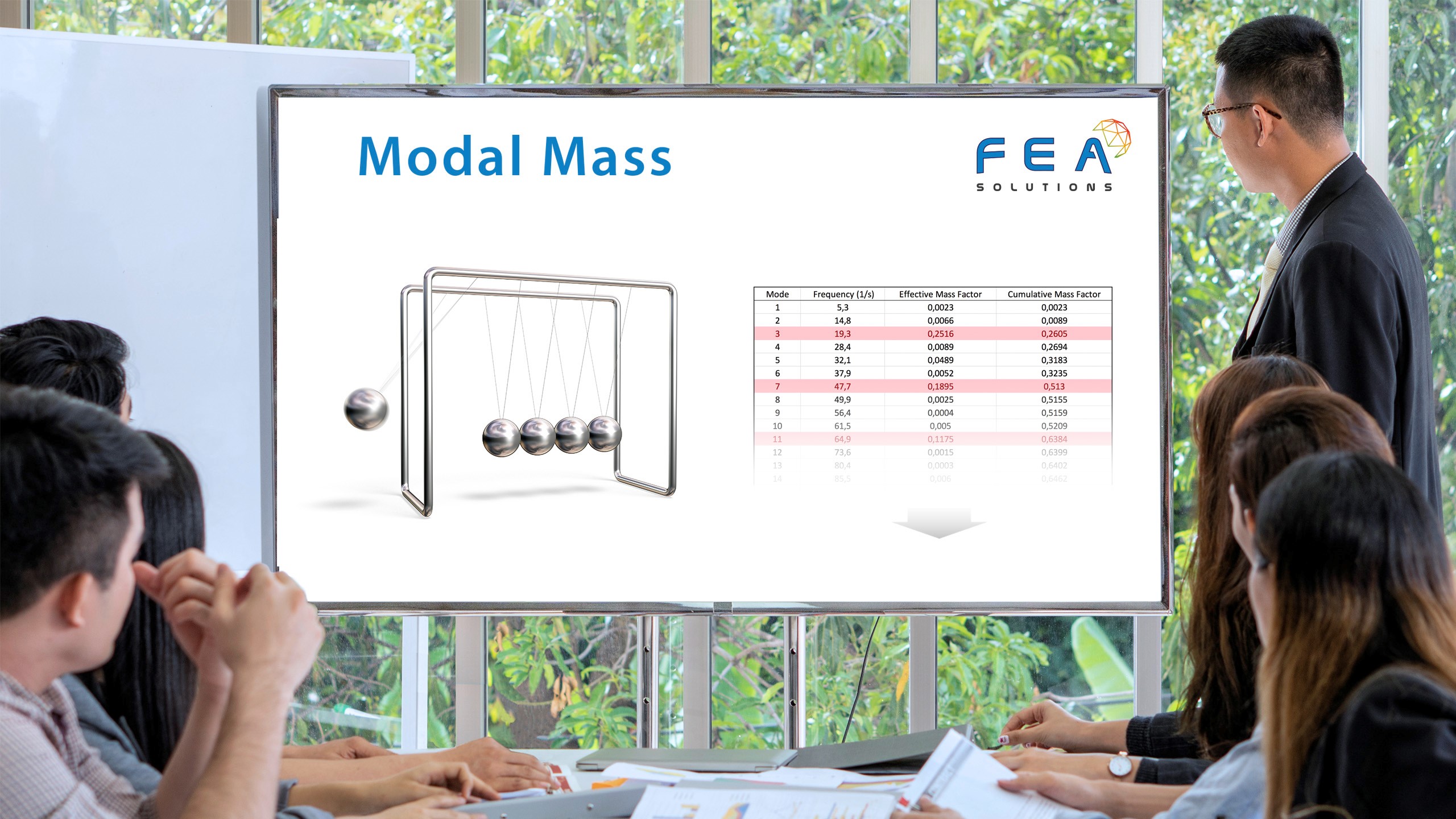
20 Mar Modal Mass
When performing a Modal Analysis (https://fea-solutions.co.uk/modal-analysis/), one of the results is the modal mass associated to each natural frequency. It is a measure to judge the significance of a vibration mode, or, in simple terms, how damaging might the deformation of a particular natural frequency be to the structure if it was excited. The modal mass of a particular mode can be given as a percentage of the overall mass of the structure, and then is referred to as an Effective Mass Factor.
Depending on the modal mass of a mode, the contribution of this mode to the system’s overall response to an excitation will be larger or smaller. If the modal mass, and therefore effective mass factor, is relatively large, the mode’s contribution to the system’s response will be large.
The Effective Mass factor of a Mode is calculated for all 3 translational directions (tx, ty, tz), as well as all 3 rotational directions (rx, ry, rz). This enables further insight as to which modes will affect the systems response in any direction.
The sum of the effective mass factors up to and including a certain mode is called the Cumulative Mass. If all modes were included, which is practically impossible, the Cumulative Mass would equal 1 (or 100%). The more modes that are calculated in the Modal Analysis, the higher the Cumulative Mass. As there are practical limits to how many modes can be calculated, a Cumulative Mass of 0.8 or greater is often considered to be sufficient to ensure accurate results for the dynamic restart analyses (https://fea-solutions.co.uk/modal-superposition/) using modal superposition of the previous Modal Analysis results.
Another figure by which to judge the mode’s contribution to the total system response is the Modal Participation Factor. The Modal Participation Factor is a measure of the interaction between modes and the system response in the given excitation direction. Once again, a larger Modal Participation Factor indicates a large contribution to the system’s dynamic response.
Please call us today on +44 (0)1202 798991 for any engineering analysis requirements you might have.
